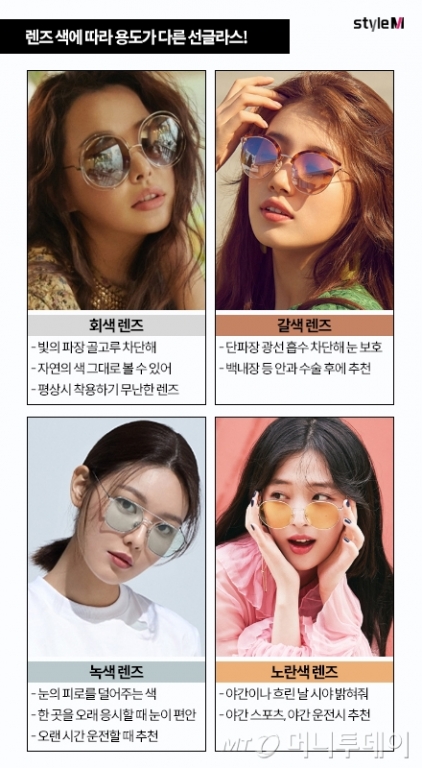Sunglasses for eye care, what should I buy?


Q.> I think about sunglasses and eye health when I am traveling and packed, and I am going to put it in my usual care. But last year, I bought sunglasses cheaply because of the fashionable design, and it continued to snowy and tired after I wore it. So I'm going to buy new sunglasses, but what features should I buy?
A.> The first thing to consider when choosing sunglasses is 'UV protection coating' (UV coating).
Ultraviolet rays are the main cause of harm to eyes. Sunglasses are recommended throughout the year to protect against UV rays.
Excessive exposure to ultraviolet light can cause diseases such as keratitis and conjunctivitis.
Exposure to ultraviolet rays for long periods of time can cause serious eye diseases, such as cataracts and macular degeneration, in which the eyes become cloudy. In particular, you should be more cautious when you have received LASIK, LASEK, or other vision correction.
When purchasing new sunglasses, you should check the 'UV400' text.
UV400 means that ultraviolet rays of wavelength below 400nm are blocked. The ultraviolet ray A which harms the eye health is 315 ~ 400nm, and the ultraviolet ray B is the wavelength of 280 ~ 315nm, which blocks both ultraviolet wavelengths.
If there is no 'UV400' mark, please try the sunglasses lens in fluorescent light. If the lens has a UV protection function, the transmitted fluorescent light can be seen in various colors. If the light is white, it does not have UV protection.
The darker the lens color, the higher the UV cut rate is not. Sunglasses lenses are suitable for 70 ~ 80% light density. When you wear sunglasses, you need to look at your eyes a little.
If the color of the sunglass lens is too dark, it interferes with the field of vision, and the ultraviolet light comes in through the enlarged pupil. Sunglasses that have a low sun protection factor with a dark lens will easily damage your eyes healthy!

It is also good to change the lens color depending on the application.
The gray lens blocks all wavelengths of light evenly, allowing you to see exactly what the natural colors look like, so you can wear it comfortably at any time.
We recommend a green lens to relieve eye fatigue when driving, and a yellow lens if you often drive at night. After cataract surgery, wear sunglasses with a brown lens that blocks short wavelength ultraviolet rays.
Red, pink, and violet-tinted sunglasses can distort the color of things and make them tired when worn for long periods of time. Wear only for a short time!